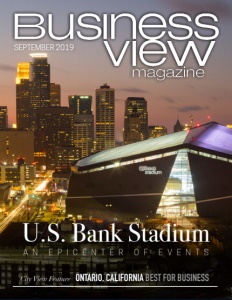“Keep the customer satisfied” is a maxim of commerce and industry that business owners have followed for years. But, lately, that focus has begun to change. More than ever, in an attempt to keep those customers satisfied, the most successful employers are shifting their attention to their employees, understanding that those who are treated with respect and loyalty from their leaders are more likely to deliver the top notch customer service that, in the end, will keep their customer satisfied.
Richard Branson, the business magnate, investor, author, and philanthropist who founded the Virgin Group in the 1970s, which controls more than 400 companies in various fields, put it this way: “It sort of should go without saying — and it’s surprising that it still doesn’t go without saying at some companies — if the person who works at your company is 100 percent proud of the job they’re doing, if you give them the tools to do a good job, they’re proud of the brand. If they are looked after, if they’re treated well, then they’re gonna be smiling, they’re gonna be happy and, therefore, the customer will have a nice experience. If the person who’s working for your company is not given the right tools, is not looked after, is not appreciated, they’re not gonna do things with a smile and therefore the customer will be treated in a way where, often, they won’t want to come back for more. So, my philosophy has always been, if you can put staff first, your customer second, and shareholders third, effectively, in the end, the shareholders do well, the customers do better, and, you, yourself are happy.”
According to a study from Accenture, the multinational professional services company that provides services in strategy, technology, and operations: “The parallels between a superior customer experience and employee experience are striking. An optimized customer experience generates loyalty and additional sales. A stellar employee experience attracts talent and boosts workforce engagement, productivity, and retention. This, in turn, directly improves a business’ financial performance.”
And the opposite is just as true. Gallup’s State of the Global Workforce Report, the holy grail of employee engagement, reveals that: “Actively disengaged” (unhappy) employees cost organizations between $450 billion to $550 billion, annually. From lost revenue to high turnover rates, unhappy employees can make a huge dent in an organization’s success.”
Here at Business View Magazine, we hear it every day from successful business leaders and entrepreneurs: “Our people are our most valuable resource.” And in this tight labor market, there is even more responsibility on organizations to create a culture where workers can have meaningful experiences and bring their best selves to work. Engaged employees meet and exceed their goals. They strive to get promoted within the company. They want to stay with the company for the long haul.
Luckily, there are proven ways in which a company can keep its employees engaged and happy. One is to focus on career development and leadership training. Employees should see how they can grow within the company. One of the reasons that employees leave an organization is a lack of growth or advancement opportunities. If employees can see a clear path for career development, they might be more likely to stay on longer. Leadership training for all level of employees can also motivate employees to take ownership of their work.
Another is flexible scheduling and PTO – Paid Time Off. Scheduling policies that allow employees to make time for their lives outside of work can make being at work less stressful. PTO also makes a huge difference when employees need to make doctor appointments or just need time to recharge.
Then there are benefits beyond the traditional health insurance plans and two-week vacations. Some employees could be struggling with student loan debt, so a student loan repayment plan benefit might alleviate some of this stress. For all workers, retirement planning options like 401Ks or IRAs can help them prepare for their futures, after their work years are over.
Companies who heavily invest in these areas are found to have more productive employees than their conventional counterparts. And with these productive workers come greater profits. Theodore Roosevelt once said, “Nobody cares how much you know until they know how much you care.” While most of us think of his quote in terms of customers, it holds just as much weight when it comes to employees. Remember: How you treat your workers today is how they’ll treat your customers tomorrow.


